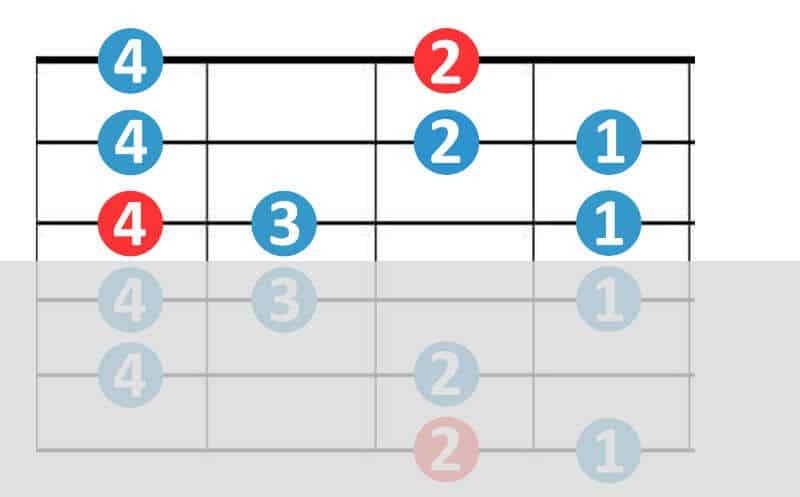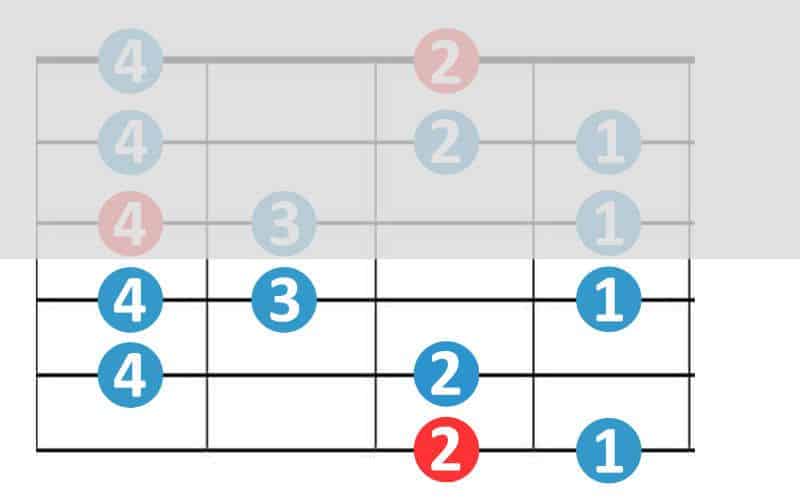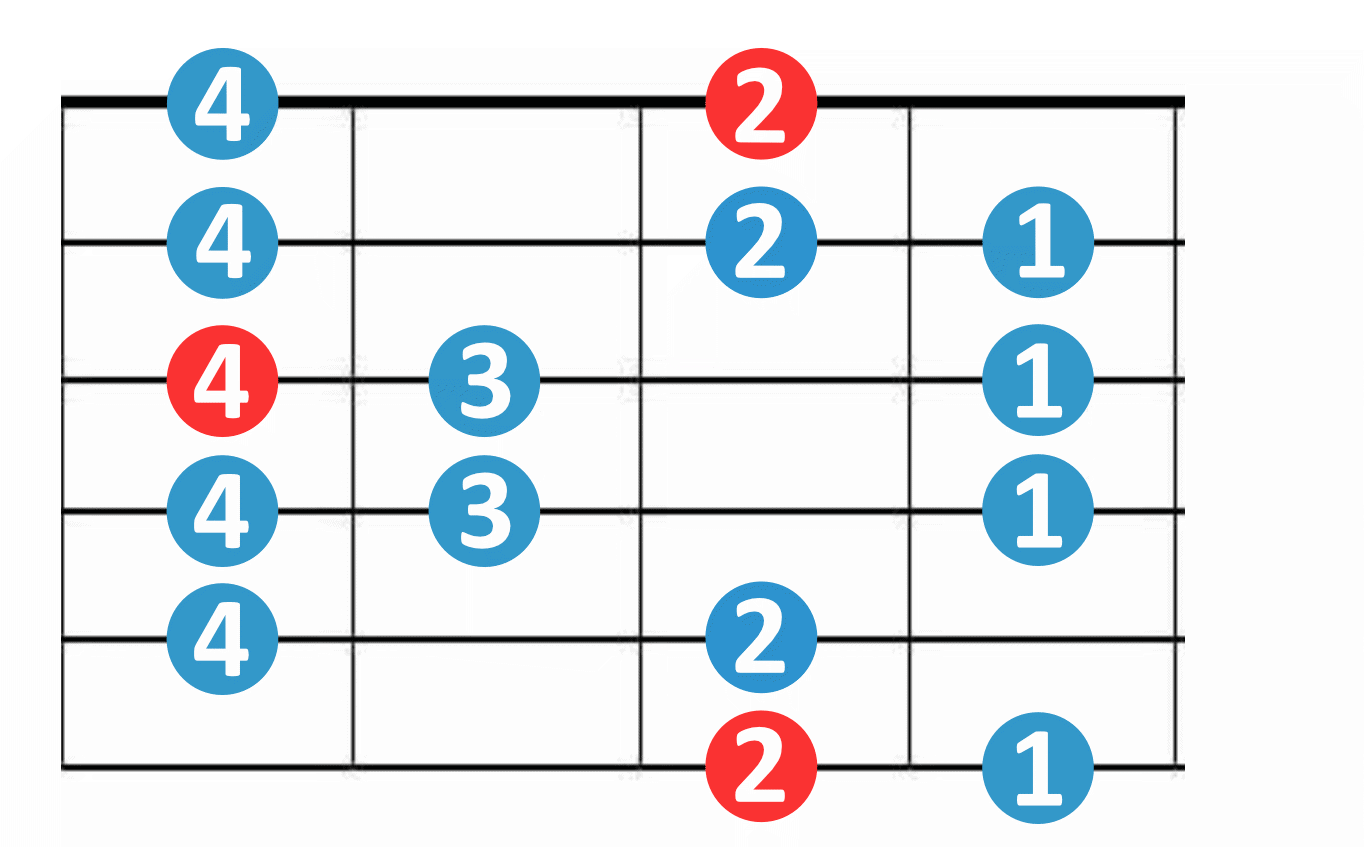What is a movable major scale you may ask? It's really simple, it's keeping the same fingering for a major scale and moving that around the fretboard to play other major scales.
Once you learn this technique, you will be able to move it around to all keys on the guitar. For example, if you learn the C major scale, you can use that fingering to "unlock" all of the other major scales.
So by keeping the same finger arrangement for the C major scale, you can play the D major, G major, B major and other major scales.
It's also important to learn because the major scale on guitar is the foundation that you compare all the other scales as well.
Simply said, it will help you understand other scales and give you a departing point every time.
Minor scales, pentatonic scales, and modes? You can use your major scale as a point of reference for all of those and much more!
Besides, learning the C major scale on guitar will give you the dexterity to play all the other scales as well.
Another important factor related to learning the major scale on guitar is ear training. This scale will start developing your ear to hear more musically, and will also be of great help when tackling music theory.
How to Play the C Major Scale on Guitar
Start learning the C major scale by placing your middle finger on the sixth string and 8th fret to play the note C.
The reason we start higher up on the neck is that the frets are closer together, so you don't have to stretch your fingers as much.
- Then play the next note (D) with the pinky on the sixth string, tenth fret
- Next move on to the fifth string to play E (index finger, 7th fret), F (middle finger, 8th fret), and G (pinky, 10th fret).
- Next up is the fourth string. We play the A (index finger, 7th fret), B (ring finger, 9th fret), C (pinky, 10th fret).
That is the entire octave of the C major scale on guitar. We played root note to root note, or C to C.

Let's go back and play that again slowly. Notice how your hand is moving very little. The work is done mostly by your fingers.
Try to play it relatively well before moving on. This is a good place to use the 80% Rule (more on that here).
On to the Second Octave
We start the second octave of the C major scale right where we left off. On the C note (fourth string, pinky, 10th fret).
Moving on to the third string, we've got D (index, 7th fret), E (ring, 9th fret), F (pinky, 10th fret). Try just doing that much, slowly.
We then move on to the second string for G (middle, 8th fret), A (pinky, 10th fret).
Now let's do that much, starting on the C note at the fourth string, the tenth fret. Got it? Great!
Let's move on to the first (high E) string now. We're gonna play the last two notes of the C major scale which are B (index, 7th fret), and finally C (middle, 8th fret).

How to Practice the Major Scale
The most important thing when learning anything new in music is to start slow. Make sure you can play the notes cleanly before speeding up.
Connect what you're hearing, with the note and your hand position. Listen to the intervals between the notes.
Once you've got the hang of these two octaves, you can try going back. In other words, play the major scale going from the C at the first string, to the C at the sixth string.
Again, move slowly and take the time to internalize sound, finger position, and intervals. Keep in mind it's fine to make mistakes. With time and practice, the C major scale will start sounding smooth and musical.

A Fun Way to Practice Scales
Practicing along with a backing track in C major is a great way to start improvising. Simply play the major scale up and down at different speeds.
You can then start altering the ordering in which notes appear. Take your time, don't rush, and try to have some fun!
Now it’s up to you
The C major scale on guitar will provide you with a blueprint for all other major scales. You can just move it around while keeping the same finger arrangement.
Moreover, the major scale is the foundation that guitarists use to compare all other scales to. Take the time to learn it well, as this will be a great step in your journey as a guitar player.
What makes a C major scale “major”?
All scales are a series of notes with a specific distance between them. We call the distance between notes an interval. In the case of the C major scale “formula” is W-W-H-W-W-W-H.
Check out my full lesson on this: What Makes A C Major Scale “Major”



Been playing guitar for several decades but never was able to get past chords. Always wanted to be able to play melody leads, but never could understand how to do that. Heard about playing scales but it seemed too difficult for me to learn. But watching your video on the moveable C Major scale simplified it for me, enough so, that I am now going to give this a shot as it doesn't look so difficult for me to learn. Will take your advice to go slow at it until I can get accurate before trying to "up" the speed of it. Thanks for your obvious enthusiasm and your well thought out teaching methods. Really appreciate what you're doing!
Thank you Anthony.